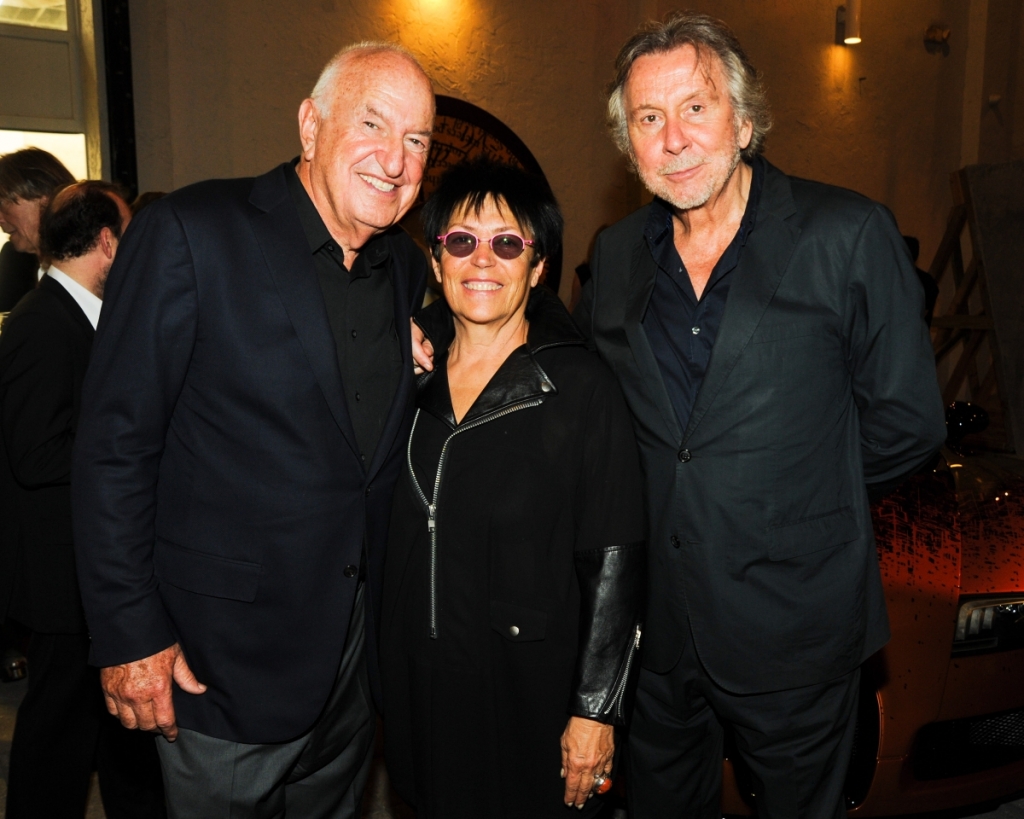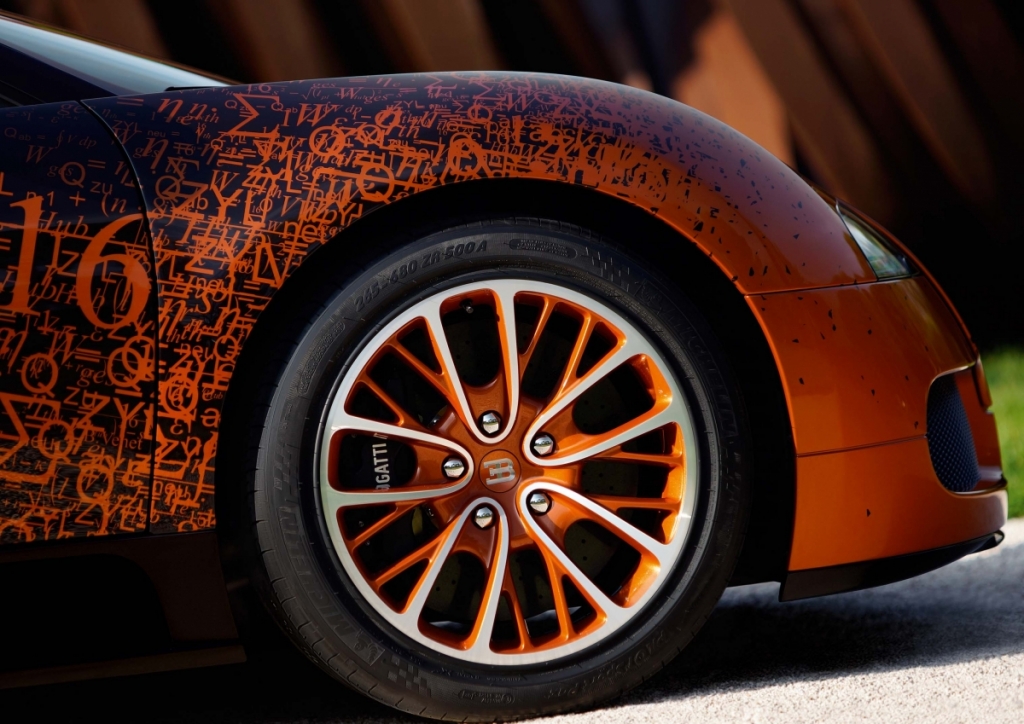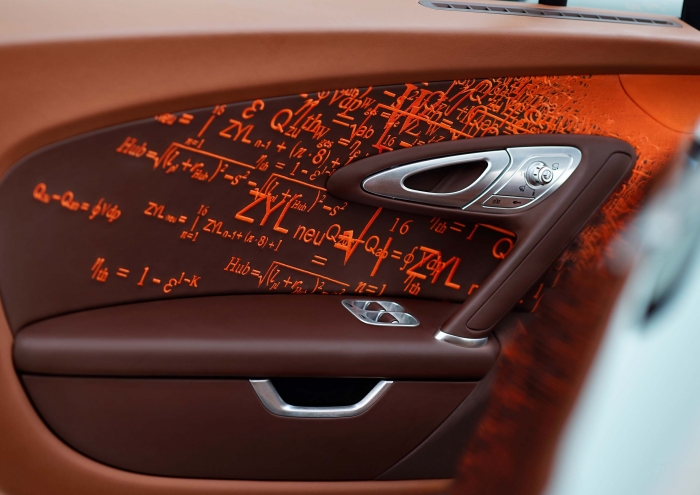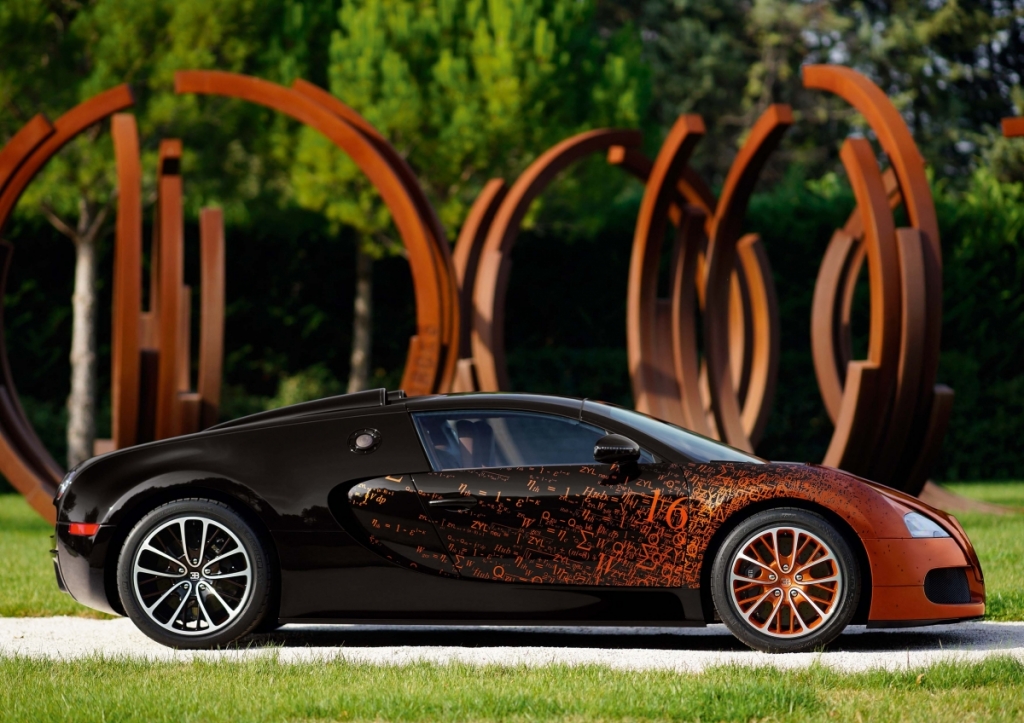The launch of the Bugatti grand sport
Venet at the Rubell Family CollectionFrench artist Bernar Venet has been invited by Bugatti, legendary supercar-maker, to create awork of art that combines the artist’s vision and passions with Bugatti’s celebrated Grand Sport.This one-of-a-kind sculptural work was on view at the Rubell Family Collection in Miamiduring last Art Basel Miami Beach.
What other object of the 20th and 21st centuries is charged with as much significance and has been cited, adapted and interpreted by artists as often as the car? How has this myth evolved through the course of time and what is the significance currently held by the design of an object considered the fastest and most expensive car in the world?
Artist Bernar Venet took on this challenge with the Grand Sport by Bugatti. Through a congenial synthesis of artistic concept and technical possibilities, Venet has created an object that integrates the symbol of speed with a fascinating, painterly exterior and an interior that alludes to haute couture.
Bernar Venet remarks, “A Bugatti is already a work of art in itself, one that transports both its beholder and its driver into new dimensions of reality. I realized how I could translate my passion for mathematical equations and scientific treatises into three-dimensional form. My works are usually self-referential. So I found the idea of translating the equations of the Bugatti engineers onto the bodywork of the car very appealing. It was, so to speak, a logical conclusion and a new challenge in terms of the specific form of collaboration and implementation. To me, the result is also exceptional when measured by artistic standards and bestows the object with a mythical character.”
The artistic avant-gardes of the first half of the twentieth century found inspiration in the car as an object of desire; they depicted it in drawings, paintings and sculptures that projected absolute speed as their point of orientation. In the 1970’s, the car served as an unconventional canvas for many artists, such as Robert Rauschenberg, Roy Lichtenstein and Andy Warhol, who painted what became known as “art cars”. This practice continued to be embraced in the 1980s.
Since the 1990s, international artists have concentrated on exploring the shifting cultural historical significance of the car. This has resulted in sculptural and conceptual responses such as those by Erwin Wurm, Gabriel Orozco, Christoph Keller, Olafur Eliasson and Damian Ortega, which tend to contextualize the car as a paradigm for the acute social and cultural changes of a globalized world.
Bernar Venetґs approach is radically different from these movements and art works. He.on the Bugatti Grand Sport by selecting a totally original solution which distiguishes itself from the more traditional work of his predecessors. The application of mathematical formulae calculating the enormous power of the Bugatti engine on the car itself, allows him to implement the self-referetial character inherent for his paintings. In so doing he pays tribute to the genius of technological science as well as the German Know How of automobile production.
In his 2012 artistic adaptation and exploration of the Bugatti Grand Sport, Bernar Venet has combined image and object to highlight the fascination with this model’s absolute beauty and speed. His work unites a conceptual approach and sculptural craft on equal footing. In this work for Bugatti, Venet links the Pop artists’ claim to the car as a canvas with the utilization of every technical and aesthetic means available for designing the fastest and costliest car in the world today. Venet incorporates signs taken from the realm of production into his visual idiom and creates a total work of art that harmonizes object and outer surface, interior and exterior, and evokes the exhilarating speed of the Bugatti Grand Sport.
The Rubells have a long history with the artist, and Mera Rubell notes, “Our friendship with Bernar Venet began in the mid-1970s. Our young families bonded over dinners and great conversations in his SoHo loft. The children played and the adults engaged in endless talk about contemporary art. Don [Rubell] and Bernar have always shared an obsession with the beauty and complexities of mathematics. When we met Bernar he was already an accomplished artist and a very intuitive collector of emerging art. We benefitted from his generous insight into the artist’s perspective and his artwork has been part of our collection since the 1970s. Bernar’s life-long, signature obsession with mathematical formulas has found a ready-made canvas on the Bugatti, which is both original and dynamic. We’re proud to present the Venet/Bugatti collaboration at our Foundation’s museum.”
About Bernar Venet
Born in France and based in New York, Bernar Venet is one of the most influential contemporary sculptors of our time. During the summer of 2011, Venet unveiled his monumental sculptures in a solo exhibition at the Chвteau de Versailles in France, becoming one of only five contemporary artists to be given the honor.
From 1961 to 1963, he covered canvases in tar; his notoriety from this period was further established after his installation of a sculpture without any specific form, composed only of a Pile of Coal heaped onto the floor. Originally known for his early radical gestures, Venet moved from Nice to New York in 1966 where, over the course of the following four decades, he has continued to explore painting, poetry, film, and performance. He is known for creating abstract pieces that make reference to the language of mathematical concepts and scientific theories, bridging pure science as a subject for art and introducing the concept of “monosemy”. His capacity for intellectual abstraction and his taste for pure reason and experimentation led him to the Conceptual Art movement of which he is one of the most prominent figures.
About Bugatti
Art – Forme – Technique: these are the brand values that laid the road map for Ettore Bugatti and that continue to provide the trajectory for Bugatti Automobiles today. Ettore was born into a family of artists: his father was a respected sculptor and furniture designer and studied at the Ecole des Beaux-Arts of Paris, while his brother, Rembrandt, was a significant sculptor whose work was exhibited at the Venice Biennale, among other venues. Ettore initially began his career by studying art at the Brera Art School in Milan before he dedicated himself to the art of engineering. In 1909, the young Ettore set up his own car manufacturing atelier in Molsheim, in Alsace, France. Art continued to influence him; he required his cars to be works of art and the design of his motors, wheels, and the controls in his cockpits derived from the formal vocabulary of the art of his time (Braque, Leger, Duchamps, Delaunay). He repeatedly experimented with new materials and repeatedly pushed himself and his cars on to new peaks of performance. Many of the models that he designed wrote racing history.
 The international Art Magazine
The international Art Magazine


